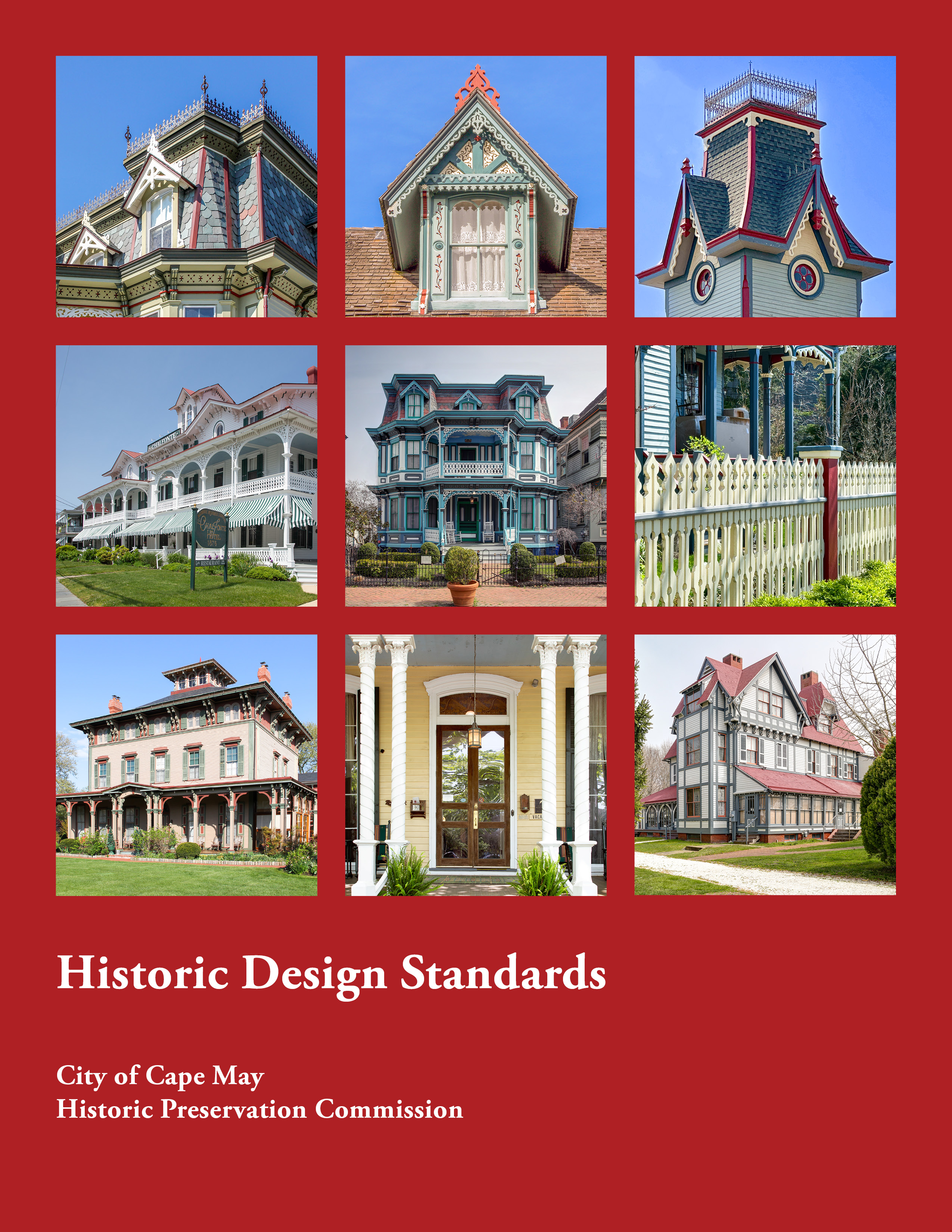Historic Design Standards
Historic Design Standards
 | Roofs Exterior Cladding Windows Porch & Entrance Doors Sites & Streetscape Storefront & Signage Accessibility Mechanical & Utility Equipment Flood Mitigation Additions New Construction Relocation Demolition |
| Download Full Version |
Introduction
The Cape May Historic Design Standards are an official document created by the Historic Preservation Commission to supplement The Secretary of the Interior's Standards for the Treatment of Historic Properties. The Design Standards apply to all structures within the Historic District and designated sites on the Zoning Map.
The Historic Design Standards safeguard historic buildings by guiding property owners and professionals. They address the concern of inappropriate modifications to character-defining architectural elements, which can undermine the integrity of the Historic District. While the Design Standards reflect Cape May's unique character, they may not cover every situation. Instead, they offer a framework for property owners, professionals, and the HPC to evaluate each project individually and develop solutions that align with the intent of the historic preservation ordinance.
Historic Design Standards
Survey Status
Properties in the Cape May Historic District are classified as either contributing or non-contributing depending on their age and historic character. The HPC reviews projects affecting both types and has developed stricter standards for contributing properties to maintain their historic integrity. The HPC Office maintains a list of contributing and non-contributing properties by address.What's my property's survey status?

